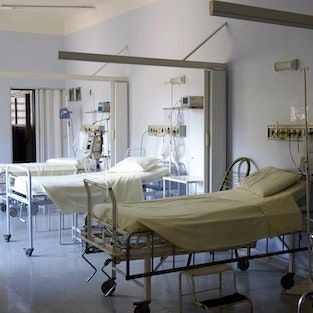News
Article
Lung Biopsy Shown to be Reliable Diagnostic Procedure for Neonatal Patients in Critical Situations
Author(s):
Despite these findings, the study highlights the need for a careful decision on the use of lung biopsy in older children given both benefits and risks.

Lung biopsies may be considered reliable as a diagnostic procedure for neonatal patients in critical situations involving a suspected diffuse developmental disorder of the lung, according to recent findings, though the procedure’s use in children over 2 years of age should be further evaluated.1
These findings resulted from a recent study looking into the diagnostic impact of implementing lung biopsies for critically ill pediatric intensive care unit (ICU) patients. The new research was led by Yaël Levy MD, PhD, from the Pediatric and neonatal intensive care unit of the Armand Trousseau Hospital, APHP, at Sorbonne University in Paris.
Levy and colleagues noted that invasiveness is considered the biggest risk in lung biopsies, with possible complications being pneumothorax, hemorrhage, and infections. They also noted that this is especially the case for critically ill patients in ICUs given invasive mechanical ventilation or given extracorporeal membrane oxygenation (ECMO).2,3
“Currently, the value and safety of this procedure in neonatal and pediatric patients hospitalized in the ICU have not yet been thoroughly analyzed,” Levy and colleagues wrote. “Therefore, this study aims to evaluate the diagnostic yield and to discuss the safety of lung biopsy in critically ill patients.”
Background and Findings
The investigators carried out their work at Armand Trousseau Hospital, AP-HP, of Sorbonne University in Paris, with the research taking place in the period between 1995 - 2022. The trial aimed at individuals seen in the Pediatric and Neonatal Intensive Care Unit (PN-ICU), a Reference Center used in the facility for patients with rare lung diseases (RespiRare).
The PN-ICU is known to admit pediatric individuals of all ages, with the facility’s expertise extending beyond the local population to include other facilities found in France. The PN-ICU department has 18 beds and they enrolled study participants given noninvasive or invasive ventilation support who had also undergone lung biopsy.
The team did exclude from their work autopsies, postmortem cases, and individuals requiring ICU management following planned operating room lung biopsies. A pediatric pathologist evaluated the lung biopsies, considering them reliable when providing a definite etiologic classification.
The investigators defined complications as being events which were unexpected and took place during or after biopsy, recording these and drawing data from patients' medical records. The team noted that categorical variables were presented as numbers and percentages, adding that continuous variables were presented as standard deviation and mean or median and interquartile ranges (IQR).
Thirty-one individuals in this study, 67.7% of which were noted as newborns with a median age of 18 days (2 days - 10.8 years), were shown by the research team to have received invasive mechanical ventilation. They added that 89.7% had experiences with pulmonary hypertension and 70.9% had been given ECMO.
Overall, the team reported that lung biopsies led to a diagnosis for a total of about 81% of subjects, though they added that diagnostic reliability seemed to lower as patients aged. This was observed with reliability being 95% among newborns, 71% among those at 1 month to 2 years, and 0/3 subjects aged over 2 years old.
The investigators found that diffuse developmental lung disorders, with 1 notably being alveolar capillary dysplasia, had been shown to be prevalent among 49% of the cases observed. This was followed by surfactant disorders for 16% of the cases.
Lastly, the team noted that complications were seen among 29% of participants, adding that these were more commonly-seen in patients under ECMO, with 7 such cases involving massive hemorrhages.
“In conclusion, lung biopsy proves to be a valuable diagnostic tool in critically ill neonates suspected of having a diffuse developmental disorder of the lung,” they wrote. “However, in older children, the decision to perform a lung biopsy should be carefully considered, weighting the potential benefits against the associated risks.”
References
- Levy Y, Bitton L, Sileo C, et al. Lung biopsies in infants and children in critical care situation. Pediatr Pulmonol. 2024; 1-8. doi:10.1002/ppul.26845.
- Inwald D. Open lung biopsy in neonatal and paediatric patients referred for extracorporeal membrane oxygenation (ECMO). Thorax. 2004; 59(4): 328-333.
- Houmes RJ, Kate CA, Wildschut ED, et al. Risk and relevance of open lung biopsy in pediatric ECMO patients: the Dutch experience. J Pediatr Surg. 2017; 52(3): 405-409.





